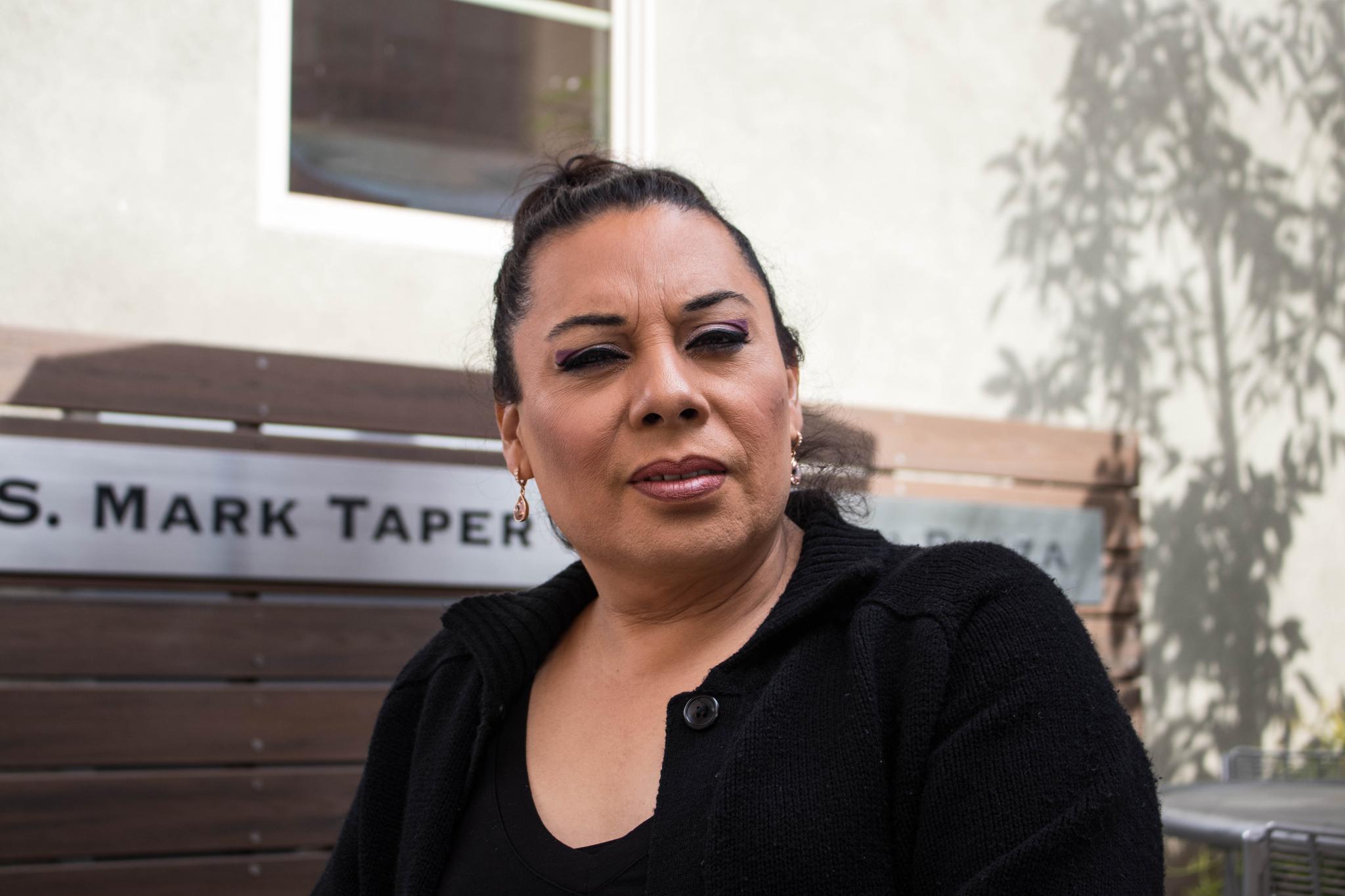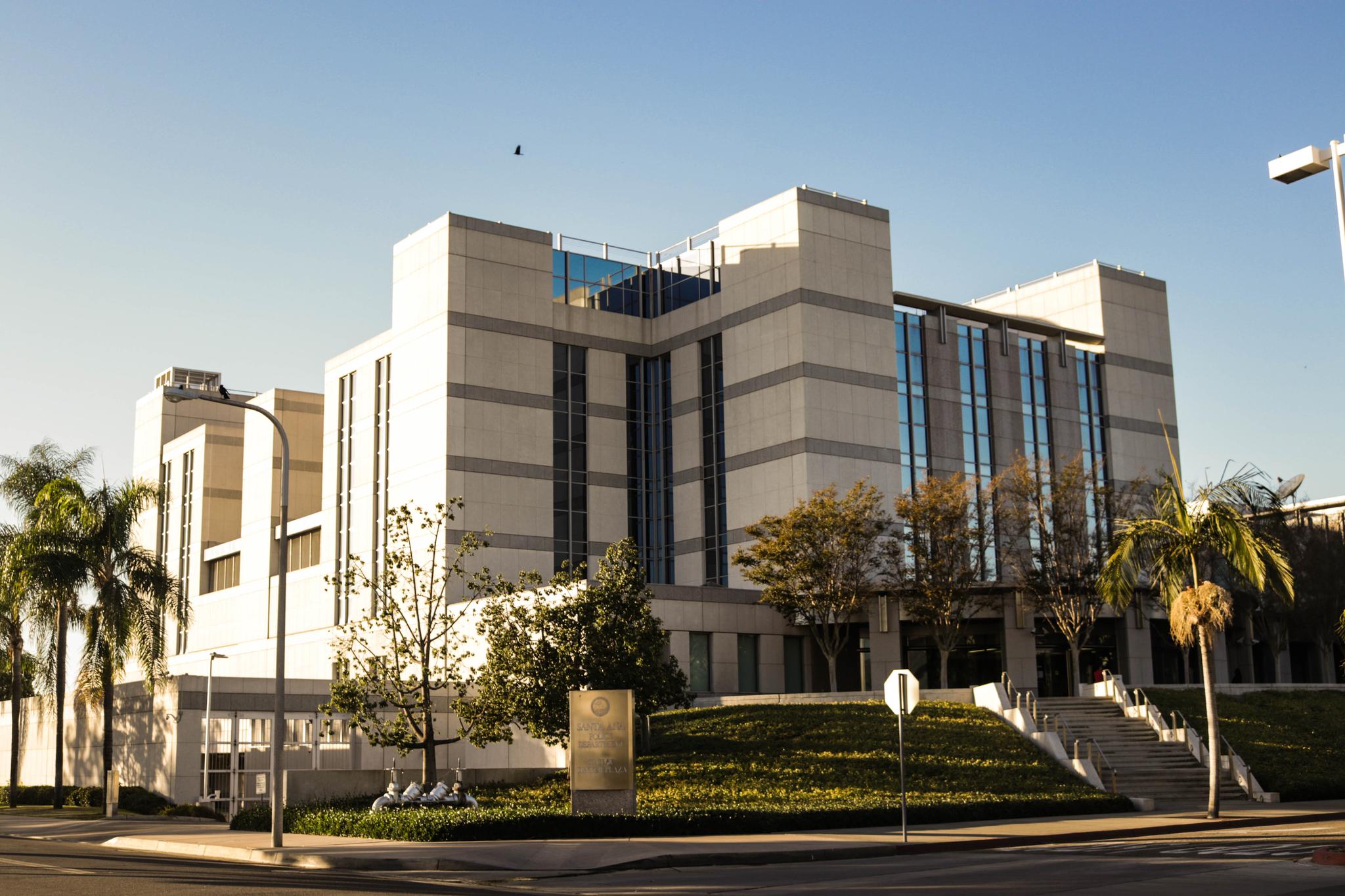For transgender immigrants, detention mirrors conditions they're fleeing
When Gretta Soto Moreno was a child growing up in Mexico, she would sometimes play at being a surgeon.
It was a fantasy that sustained her through years of domestic abuse, police violence and harassment — driven by the fact that Soto Moreno was born biologically male, but identified as a woman.
“I dreamed of changing myself one day,” said Soto Moreno, 44. She came to the United States and sought asylum so she could do just that — but instead, she was held in immigration detention for three years, where she suffered many of the same abuses that she thought she had left behind in Mexico, from sexual harassment to verbal abuse.
 Gretta Soto Moreno crossed the border from Mexico illegally in 2003, and was detained in Arizona in 2013. She was held in a detention facility for two years, where she said she was tempted to kill herself after officers repeatedly told her that she was not a woman and needed to start acting like a man. Photo: Diana Kruzman.
Gretta Soto Moreno crossed the border from Mexico illegally in 2003, and was detained in Arizona in 2013. She was held in a detention facility for two years, where she said she was tempted to kill herself after officers repeatedly told her that she was not a woman and needed to start acting like a man. Photo: Diana Kruzman.
On any given day, an estimated 65 transgender people without legal status are held in immigration detention centers in the United States, many of whom are waiting to see whether they will be granted asylum. They are often fleeing violence or persecution in their home countries, or abuse within their own families stemming from their status as transgender people. Many are detained in California — which, until recently, held at least half of all transgender detainees in a special facility at the Santa Ana City Jail.
Legally, these centers are required to ensure the safety and humane treatment of the people being held there — but an investigation into conditions in these facilities reveals that far from safeguarding the rights of transgender detainees, immigration detention centers often expose them to further harm, from sexual harassment and abuse to a lack of adequate medical treatment.
“The detention period is inherently bad for transgender immigrants,” said Jorge Gutierrez, an organizer for the advocacy group Familia: Trans Queer Liberation Movement. “They are mistreated, harassed and exposed to violence both physical and sexual.”
Rights groups like the one Gutierrez works for are fighting to change the status quo, working to improve conditions inside the detention centers while pushing for detainees to be released. But under the new presidential administration, the flood of immigration arrests — which may be raised to 80,000 per day, according to a confidential memo reviewed by the Los Angeles Times — shows no sign of stopping.
“I just want to be myself, and not have to prove anything to anyone,” Soto Moreno said. “We don’t come here to kill anyone. We come here to survive.”
Pervasive violations
Soto Moreno crossed the U.S.-Mexico border in Arizona in 2003, and was detained in 2013. She was held in Arizona for two years, where she said she was tempted to kill herself after officers repeatedly told her that she was not a woman and needed to start acting like a man. After a humiliating series of encounters with officers, who she said groped her during strip searches, Soto Moreno resorted to self-harm, cutting her own genitals in an attempt to get rid of the features that she believed made her a target.
“I wrote on the wall in my own blood: ‘Stop mistreating LGBT people,’” Soto Moreno said. After this incident, she was transferred to a specialized facility in Santa Ana, Calif. that held transgender women separately from other detainees — but the problems didn’t stop there. Soto Moreno said she was forced to strip in front of male officers and denied access to hormone therapy for three months. She considered allowing herself to be deported to escape this treatment, even though she feared returning to Mexico.
Much of what she experienced directly contradicts a 2015 memorandum that requires Immigration and Customs Enforcement officers to conduct searches in a “professional and respectful” manner and to take the preference of the detainee into account when determining the gender of the officer that will conduct the search. The same memorandum states that transgender detainees must have “continued access” to hormone therapy if they were already using it before they were detained.
But ICE’s own internal reviews have found flaws in this system. A 2016 inspection report from the Office of Detention Oversight found that at the Santa Ana City Jail, “no medical personnel are present to observe the strip search of transgendered detainees” — despite a policy described in ICE’s 2011 Performance-Based National Detention Standards, which states that a medical professional should be present if at all possible.
The 2016 report also found that “a medical or mental health professional is not consulted” when deciding how to classify transgender detainees — as low, medium-low, medium-high or high custody detainees. But the 2011 standards require ICE to consider the effects of placement on the detainee’s mental health and well-being, and stipulates that “a medical or mental health professional shall be consulted as soon as practicable on this assessment.”
Santa Ana’s intake screening form, the 2016 inspection report revealed, “does not include a requirement for the screener to inquire about a transgender detainee's gender identification,” even though this information is necessary to meet the other standards for transgender care.
A FOIA request asking for documents describing the specific conditions under which transgender detainees are searched, assessed and housed in a detention center other than Santa Ana was not returned. ICE did not respond to repeated requests for comment on the allegations made by former detainees at Santa Ana City Jail, Eloy Detention Center and Adelanto Detention Facility.
‘A traumatic experience’
Often, violations like those Soto Moreno experienced arise because of a lack of training or inherent bias in the officers overseeing transgender detainees. A 2015 report conducted by Community Initiatives for Visiting Immigrants in Confinement, an advocacy organization known by its acronym CIVIC, detailed the conditions inside the Adelanto Detention Facility in Southern California, which the group observed over a six-month period.
Adelanto officials were considering creating a pod specifically to house transgender women, but one field office administrator was quoted as saying, “Hey, I would say I was gay too in order to get into the pod because it has carpet.” Upon further questioning, staff members at Adelanto “could not explain the difference between male-to-female and female-to-male transgender individuals,” the report found.
“[ICE] officers are not culturally competent enough to treat this community with respect,” said Gutierrez of Familia: TQLM, who has helped over 50 transgender detainees find legal representation.
 In Mexico, Sotto Moreno faced domestic abuse, police violence and harassment — driven by the fact that she was born biologically male, but identified as a woman. Photo: Diana Kruzman.
In Mexico, Sotto Moreno faced domestic abuse, police violence and harassment — driven by the fact that she was born biologically male, but identified as a woman. Photo: Diana Kruzman.
Other issues are similarly systemic, according to research conducted by advocacy groups. A 2015 report from the National Center for Transgender Equality found that 45 percent of transgender immigrant respondents who had been detained were mistreated in some way. 23 percent were physically assaulted and 15 percent were sexually assaulted, and nearly one-third were denied access to hormone treatment.
Additionally, the study found that 42 percent were held in solitary confinement, a condition that ICE claims is necessary to keep them safe from harassment but which significantly raises their likelihood of committing suicide.
These conditions have affected former detainees like Tania Soria Gregorio, 46, a transgender woman who crossed the border from Mexico in 2001, fleeing what she called a “homophobic country” where she experienced jeering and insults in the streets. Recognizing that the police would not protect her, she came to the United States, and was detained and sent to Santa Ana in 2014. For three months, she said she could not get medical attention and did not have access to hormone therapy.
“It was a traumatic experience,” Soria Gregorio said. “I couldn’t talk to my family, and didn’t have access to enough food or water.”
Her attorney, Monica Eav Glicken, said that she is continuing to fight for Soria Gregorio to receive legal status, as she was released from the detention facility but is still unable to work legally inside the United States.
“Her experience in Santa Ana was yet another layer of trauma in her life,” Glicken said. “She just wanted it to be over.”
Problems in the LGBT pod
Situated on a grassy hill in the city center, the Santa Ana City Jail is an imposing structure — a blocky, angular building close to City Hall and the police department headquarters.
As recently as April, the jail — only three miles from another ICE detention center, the Theo Lacy Facility — held 27 transgender women in their own specialized unit, one of only two detention centers in the country to do so. But in May, the city ended its contract with ICE and moved the last of its immigrant detainees to a facility in New Mexico, following a citywide plan to reduce the number of jail beds and terminate its relationship with ICE.
When it opened in 2011, the Santa Ana City Jail’s LGBT pod, as it was known, aimed to protect transgender women from many of the abuses they faced in other facilities, where officers often disregarded their gender identity and placed them with men. A report released by Human Rights Watch in 2016 found that more than half of the 28 women it interviewed had been held in men’s facilities at some point — a situation that opened them up to physical, sexual and emotional abuse.
But according to activists, the LGBT pod failed to protect transgender detainees from abuse at the hands of officers. A complaint filed by CIVIC in April included the story of a transgender woman, Damion “Latoya” Ricketts, who said she was sexually harassed by a male corrections officer while being held in Santa Ana in July of last year. According to the complaint, Ricketts was taken into the men’s changing room and ordered to undress “in a lustful way.”
“The officer then ordered Mr. Ricketts to turn around, bend over, spread her buttocks with her hands, and cough,” the report said. “He ordered her to do this at least three times in a row. Ms. Ricketts observed the officer’s arousal and felt violated.”
 The Santa Ana City Jail operated a specialized detention facility for undocumented transgender women from 2011 to 2017 that aimed to provide protections unavailable at other detention centers. But reports allege that the facility failed to protect detainees from abuse at the hands of officers. Photo: Diana Kruzman.
The Santa Ana City Jail operated a specialized detention facility for undocumented transgender women from 2011 to 2017 that aimed to provide protections unavailable at other detention centers. But reports allege that the facility failed to protect detainees from abuse at the hands of officers. Photo: Diana Kruzman.
Issues like this are common, advocates say, even at a specialized facility like Santa Ana. Before the Santa Ana City Jail decided to end its contract with ICE, Gutierrez organized protests outside the building to demand the release of transgender immigrant detainees. Gutierrez said that while the LGBT pod was in theory a step forward, in practice the same issues that plagued transgender people in other facilities still existed here.
“We’re organizing around this issue because we want to end all detentions, period,” Gutierrez said. “But it’s important to think about how they are impacting vulnerable communities, like trans folks, in particular.”
With the closure of the LGBT pod in Santa Ana, the fate of many transgender detainees held in California is unclear. Some may be sent to a facility in Texas, now the only remaining immigrant detention center in the country with a specialized transgender unit. Others may continue to be placed in facilities that don’t correspond with their gender identity, leaving them in danger of harassment and assault.
But with the number of immigration arrests on the rise — and a potential 15,000 to 50,000 transgender immigrants currently residing in the United States without legal status — activists see an even greater potential for abuse. California has banned the creation of any new immigration detention center contracts, so advocates like Soto Moreno are pushing for immigrants to be released instead of moved somewhere else.
“Officers in detention centers are trained to deal with criminals — they are not prepared to deal with the LGBT community,” Soto Moreno said. “We’re just asking for respect.”
Post a comment